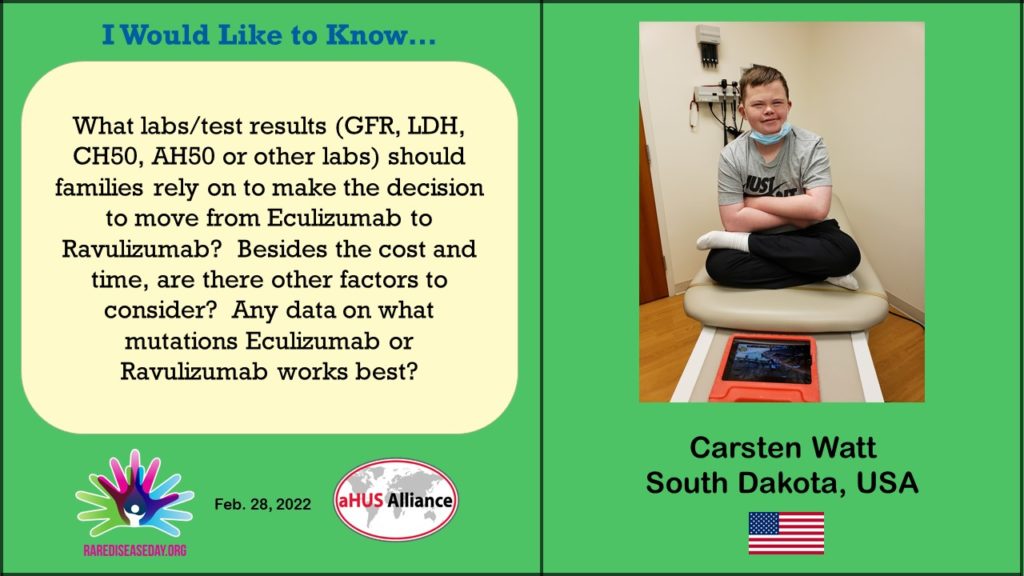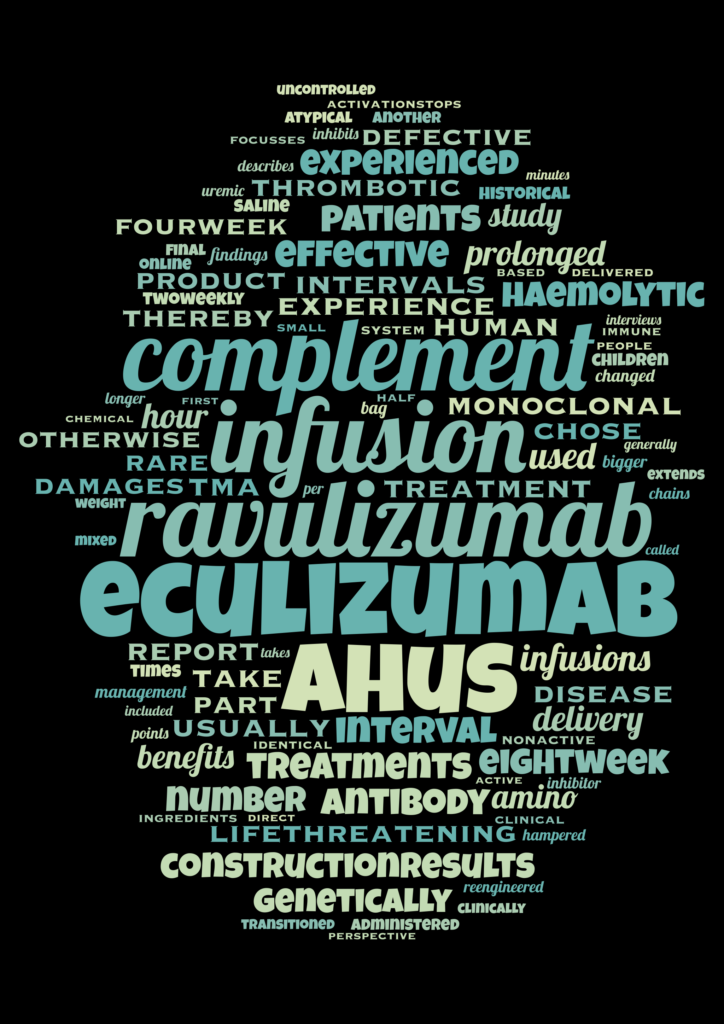Ravulizumab is eculizumab, Carsten.
They work the same way.
It is the same monoclonal antibody. It has just been modified in a couple of places so that it is effective at blocking C5 , a component in Complement, for longer. Indeed for four times as long as eculizumab for adult treatment.
These “mabs” are not treating the mutations in Complement components. They work on the uncontrolled activity of complement by stopping perfectly good C5 from from being turned into the membrane attack complex that sets off the TMA that leads to the damage in aHUS.
But there is a mutation that has been found in some C5 that would stop both eculizumab and Ravulizumab from working. Each would not be able to attach to this version of C5. C5 would not be blocked and aHUS could not be stopped.
In new aHUS onsets eculizumab is still regarded as treatment of choice because of uncertainties surrounding diagnosis. Shorter treatment intervals means that treatment can be withdrawn quicker if not needed because the patient does not have aHUS or has been diagnosed too late to help them.
No need to have treatment if it cannot work, it would do no good and be a waste of expensive resource.
Once stable on eculizumab treatment, usually a few months after the initial onset, consideration can be given to transition from eculizumab to Ravulizumab.
As you point out, Carsten , Lactate Dehydrogenase or LDH is something that might indicate that the thrombotic microangiopathy, or TMA is no longer manifesting. Blood vessel linings, damaged by aHUS, are repairing as LDH returns to normal levels. Also as you say Carsten kidney function measured by estimated glomerular filtration rate ( eGFR) would be an indicator of clinical stability. CH50 is a test of activity in the classical pathway of Complement, not a specific test for aHUS alone and not reliable in the diagnosis of aHUS. AH50 is a measure of alternative pathway component deficiency. Low levels could indicate some on going aHUS if patient is known to have aHUS and despite eculizumab treatment.

C5b-9 , the membrane attack complex, level, has been something of interest to clinicians as a way of telling specifically whether eculizumab is working properly. And if so, it would indicate whether the time was right to transition.
Ravulizumab is much cheaper than eculizumab in price and the volume of drug needed. The logistics of transition need careful management so that everything is in the right place at the right time. But once done it becomes as routine as eculizumab. The two month interval (adults) instead of two week interval is very welcome and hard to believe at first. Life becomes “freer and easier”.
Global Action produced a report on the experiences of patients on the trasition to ravulizumab from eculizumab . A copy can be seen at this LINK .

New technologies to treat aHUS are coming along in the 2020s so this kind of decision will need to be made more and more, Carsten. Not just to ravulizumab but possibly to crovalimab or ipcatopan treatment and maybe others.
Transition will be an important outcome from trials of the new technologies, once it is known that the technologies work. And the views of patients in these trials will be valuable to others.
A confirmed aHUS diagnosis , clinical stability on treatment and transition logistics in place before a decision is made and will determine when to do so.
Article No. 495

